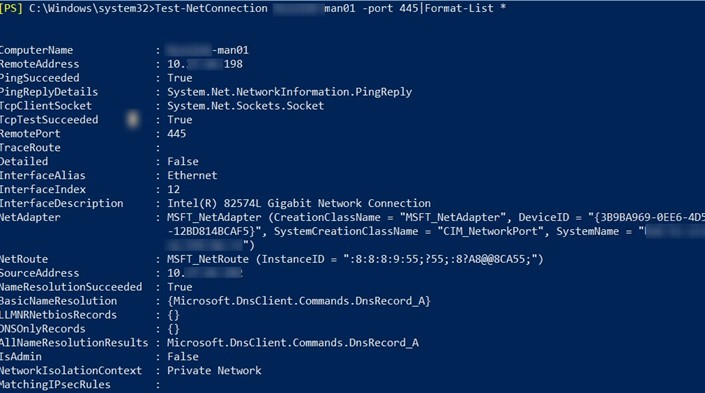Desired State Configuration (DSC) is a feature in PowerShell that enables you to specify and maintain the configuration of a system or application. DSC works by defining the desired configuration state of a system through MOF (Managed Object Format) documents, which are written in a declarative syntax.
Here are some key concepts to help you understand DSC in PowerShell:
- Configuration: A configuration in DSC is a set of instructions that define the expected state of a system or application. A configuration can include resources, which are units of code that DSC uses to apply the desired configuration to the system.
- Resource: A resource is a unit of code that defines a specific set of actions that DSC should take to apply the desired state of a configuration. Resources are typically used to configure a particular aspect of a system or application, such as a service or registry setting.
- MOF Document: An MOF (Managed Object Format) document is a file that defines the desired configuration of a system or application. MOF documents are written in a declarative syntax that defines the desired state of each resource in a configuration.
- Configuration Script: A configuration script is a PowerShell script that defines a DSC configuration. Configuration scripts typically use cmdlets to define resources and their properties.
- Configuration Data: Configuration data is a set of variables that define the specific configuration settings for a system or application. Configuration data can be stored in a separate file or embedded in the configuration script itself.
- Pull Server: A pull server is a central server that hosts the MOF documents and configuration data for a set of systems. When systems are configured to use a pull server, they periodically check for changes to the MOF documents and apply updates to their configuration as necessary.
- Push Model: The push model is a DSC deployment model in which a system administrator manually triggers the deployment of a configuration to a set of systems.
- Pull Model: The pull model is a DSC deployment model in which systems periodically check a pull server for changes to their configuration.
Some additional details about Desired State Configuration (DSC) in PowerShell:
- Idempotent Configuration:
DSC configurations are idempotent, which means that applying a configuration multiple times will always result in the same desired state. If a system already matches the desired state, DSC will take no action. This ensures that configurations can be reapplied without causing unintended changes or conflicts. - Configuration Data and Partial Configurations:
Configuration data can be used to parameterize configurations and make them reusable across different environments. You can define configuration data using PowerShell data files (PSD files) or retrieve it from external sources such as Configuration Namespaces (CNS). Partial configurations allow you to divide a configuration into smaller, manageable pieces that can be combined and reused. - Configuration Drift and Compliance:
Configuration drift refers to the state of a system deviating from the desired configuration over time. DSC provides mechanisms to detect and correct configuration drift. By periodically applying configurations, the Local Configuration Manager (LCM) ensures that systems remain in compliance with the desired state. You can monitor and track configuration drift using reporting features and take corrective actions as needed. - DSC Resource Kit:
The DSC Resource Kit is a collection of additional resources provided by Microsoft and the PowerShell community. These resources extend the capabilities of DSC and allow you to manage a broader range of system components. The DSC Resource Kit includes resources for managing IIS, SQL Server, Active Directory, Azure, Hyper-V, and many other technologies. - Configuration Push and Pull Mode:
DSC supports both Push and Pull modes for applying configurations. In Push mode, a management system directly pushes configurations to target systems. This mode is useful for ad-hoc or real-time configuration updates. In Pull mode, target systems periodically retrieve configurations from a central Pull Server. This mode is beneficial for managing a large number of systems or systems located in different network segments. - Integration with Configuration Management Tools:
DSC can be integrated with various configuration management tools and frameworks. For example, DSC configurations can be used with Azure Automation, System Center Configuration Manager (SCCM), and other tools to automate configuration management at scale. Integration with these tools allows you to leverage existing infrastructure and workflows for managing configurations. - Cross-Platform Support:
DSC is not limited to Windows systems. With the introduction of PowerShell Core, DSC can be used to manage configurations on Linux and macOS systems as well. This cross-platform support enables consistent management of configurations across heterogeneous environments.
DSC provides a powerful and flexible approach to defining and maintaining the desired state of systems. By automating configuration management, DSC helps reduce manual errors, achieve consistency, and streamline the deployment and management of infrastructure and applications.
By leveraging these concepts, system administrators can use DSC in PowerShell to automate the configuration and management of systems and applications across their organizations. DSC can help ensure that systems remain in a consistent, desired state, reducing downtime and improving the overall management of IT systems.
